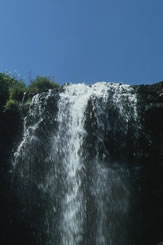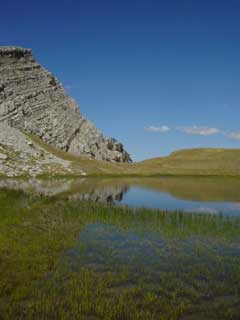- Regional water observation mechanism
- Regional Cooperation Assessment
- Water Quality Monitoring (JP)
- Water scarcity and drought (JP)
- Groundwater (JP)
- Waste water reuse (JP)
- Shared Water Resources Management (JP)
- Linking rural development and water management (JP)
- Waste management
- Water institutions
- Climate Change
- Floods
- Desalination
- Right to Water
- Irrigation
- Satellite data
- Water reports & data
- Hydrology
- Sanitation
- Gender and IWRM
- ArabWAYS
- Non-Revenue Water
- Virtual Water & Water Footprint
- WANA Water Panel
- Water Demand
- Water Governance
- Water Pricing
- Water accounts
- Water nexus Energy
- Geosciences
- Rural Management
 DMCii pioneers new framework for satellite imaging quality control
DMCii pioneers new framework for satellite imaging quality control
Remote sensing solution provider DMCii’sChief Scientist, Dr Steve Mackin, has pioneered a new approach forderiving quality control indicators from Disaster MonitoringConstellation data. The new framework, which is being implemented byDMCii, holds great potential for quality control and consistency inmulti-source imaging projects such as the European Global Monitoringfor Environment and Security (GMES).
Dr Mackin commented:“This has never been done before and its application holds greatpotential for projects where imaging is sourced from multiple providersand satellites. As a GMES contributor, DMCii has begun implementingthis new quality control framework within the Disaster MonitoringConstellation to validate it for wider use.”
The European SpaceAgency (ESA) has expressed interest in the techniques that Dr Mackinpresented in his role as one of the UK’s representatives in the WorkingGroup for Constellation Calibration on the Committee on EarthObservation Satellites (CEOS). The first dedicated GMES satellites,Sentinel 2 and Sentinel 3, will demonstrate (at least in part) the newframework as a quality control measure for GMES.
From researchconducted with the National Physics Laboratory it was clear that makingextra quality information available to describe imaging products wouldbe of significant benefit to imaging experts. The new frameworkprovides a clearer quality statement with defined error budgets at eachstage and hence identifies low quality data before it can be issued.The traceability of data is also improved, enabling the rapididentification of the processing area at fault.
Dr Mackin statesthat the proposed methodology holds many benefits for imaging users:“It makes sense for any customer to request standardized qualitycontrol information from imaging suppliers. Only then can you be sureof the quality of your end product and its fitness for purpose. It alsoallows users to compare data across image providers in a fast andsimple manner and determine who meets the user’s requirements at thelowest cost – hence saving time and money for the end-user”.
TheDisaster Monitoring Constellation (DMC) is a unique cooperation betweenpartners that own satellites and share their data. DMCii coordinatesthe constellation to provide high quality commercial imaging servicesand rapid disaster monitoring programmes. The DMC’s imaging capacity isset to grow to more than 10 million sq km per day by the end of 2008with the addition of new satellites, UK-DMC2 and Deimos-1, which sharea 20metre 600km swath imaging capability. The UK-DMC2 satellite willalso offer a direct downlink service to X-band groundstations.
Lastyear, DMCii imaged 38 European countries for GMES in the 6 monthsbetween April and October 2007 as a GMES contributing mission. DMCiidelivered precisely positioned data in each national map projection.This was the first time that the whole of Europe had been successfullyimaged at high resolution in a single year.
The GlobalMonitoring for Environment and Security (GMES) programme (recently renamed Kopernikus) is led by theEuropean Commission with the aim of delivering environment and securityservices. It is the European response to the ever-increasing demands ofeffective environmental policies. GMES is the European contribution tothe Global Earth Observation System of Systems (GEOSS).
| Contact information |
Robin Wolstenholme
(email: info@ballard.co.uk) Phone: 01306882288 |
|---|---|
| News type | Inbrief |
| File link |
http://www.ballard.co.uk/press_releases/company_releases.aspx?story=1260 |
| Source of information | PR Agency |
| Keyword(s) | GIS, information processing |
| Subject(s) | INFORMATION - COMPUTER SCIENCES , RISKS AND CLIMATOLOGY |
| Relation | http://www.emwis.net/topics/fol573816/fol522448 |
| Geographical coverage | Belgium, Denmark, France, Germany, Hungary, Italy, Luxembourg, Norway, Portugal, Spain, United Kingdom |
| News date | 17/09/2008 |
| Working language(s) | ENGLISH |
 you are not logged in
you are not logged in





